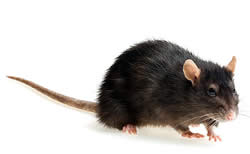Difference between Rat and Rodent
Key Difference: A rat is a medium-sized to large rodent, with a pointed muzzle, long slender and hairless tail, and dexterous forepaws. Rodents are mammals that are part of the Rodentia order under the Mammalia class.
The terms rat and rodent are often confusing for many people as there are many similarities between a rat and a rodent. This is because Rats are actually rodents. Rodents are mammals that belong the Rodentia order, which rats are part of. Hence, it be very confusing. However, one should keep in mind that although all rats are rodents, not all rodents are rats. The Rodentia order has over 2,277 species.

A rat is a medium-sized to large rodents, generally described as pigeon-sized. They are usually distinguished from mice by their size, but are also known to have a pointed muzzle, long slender and hairless tail, and dexterous forepaws. Like mice, these rodents are also found throughout the world, in varying environments and are nocturnal.
Rats are considered as deadly pests, especially because they often carry deadly diseases. They have been known to have a big part in spreading the Bubonic plague throughout Europe. They are also known to damage and eat crops, and cause structural damage. In some parts of India, every fifty years, armies of bamboo rats descend upon rural areas and devour everything in their path. Also, it is believed that there are up to 4 times more rats in New York City than there are people.
There are many species of rats, including, Philippine forest rat, Polynesian rat, Himalayan field rat, Sunburned rat, Rice-field rat, Summit rat, Nonsense rat, Palm rat, little soft-furred rat, Malayan field rat, Spiny rat, Australian swamp rat, long-haired rat, etc. However, of these the most commonly found and popularly known is the Brown rat or Norway rat and the black rat.
 Rodents are mammals that are part of the Rodentia order under the Mammalia class. These mammals are characterized by a single pair of continuously growing incisors in each of the upper and lower jaws which must be kept short by gnawing. This requires the mammals to constantly seem like they are chewing something. Rodents are a huge order and encompass over 2,277 different species including mice, rats, squirrels, porcupines, beavers, guinea pigs, and hamsters.
Rodents are mammals that are part of the Rodentia order under the Mammalia class. These mammals are characterized by a single pair of continuously growing incisors in each of the upper and lower jaws which must be kept short by gnawing. This requires the mammals to constantly seem like they are chewing something. Rodents are a huge order and encompass over 2,277 different species including mice, rats, squirrels, porcupines, beavers, guinea pigs, and hamsters.
Approximately 40% of all mammals are considered to rodents. These rodents are found in almost all continents, other than Antarctica. Rodents use their sharp incisors to gnaw wood, break into food, and bite predators. Many people consider rodents to be pests, damaging personal property, agricultural crops and spreading diseases. The term rodent is derived from the Latin word ‘rodere’ which means “to gnaw”. All rodents, with the exception of Paucidentomys vermidax, have a single pair of upper and a single pair of lower incisors, followed by a gap (diastema), and then one or more molars or premolars. Rodents lack canines.
Many rodents are small in size and weight, but some rodents can weigh up to 1,000 kg depending on the individual species or rodent. Rodents are known reproduce rapidly and can function as food sources for many predators. They are also used for seed dispersal, fur, pets and conducting tests.
|
|
Rat |
Rodent |
|
Kingdom |
Animalia |
Animalia |
|
Phylum |
Chordata |
Chordata |
|
Class |
Mammalia |
Mammalia |
|
Order |
Rodentia |
Rodentia |
|
Superfamily |
Muroidea |
- |
|
Family |
Muridae |
- |
|
Subfamily |
Murinae |
- |
|
Genus |
Rattus |
- |
|
Species |
64 known species |
Over 2,277 species |
|
Commonly known species |
Black Rat (Rattus Rattus); Brown Rat (Rattus Norvegicus) |
Rats, mouse, squirrels, hamsters, gerbils, etc. |
|
Life Span |
Avg. 2-3 Years |
The life span changes depending on the size of the animals |
|
Length (head & body) |
200-250 mm (8-10 inches) |
Can range anywhere from 60 mm – 800 mm, some can even be bigger. |
|
Weight |
Up to 300 grams (11 ounces) |
Anywhere between 7 grams to 91 kg. |
|
Color |
White, gray, brown or black. |
White, gray, brown or black. |
|
Head |
Short, stubby, broad, large relative to body |
Rodents usually have a small, stubby head. |
|
Muzzle |
Large and blunt with wide muzzle |
Large incisors that grow continuously and must be kept short by continuous gnawing. |
|
Ear |
Ears are small relative to the head. |
Ear sizes differ depending on the animal. |
|
Tail |
Shorter than body, thick and heavy |
Tail can be skinny or full of fur depending on the species. |
|
Eyes |
Small |
Are usually small, but again changes depending on the animal. |
|
Sense of smell |
Rats have a keen sense of smell and are easy to train. Used by a Norwegian NGO to detect landmines and diagnose tuberculosis through smell. |
- |
|
Distinguishing features |
Primarily nocturnal, high intelligence, keen sense of smell, ingenuity, aggressiveness, and adaptability. |
Rodents are classified based on a single pair of continuously growing incisors in each of the upper and lower jaws which must be kept short by gnawing. |
|
Average gestation period |
21 days |
Differs depending on species. |
|
Nutrition |
Omnivores, known to attack rats of other species, mice, and even eat their young in some cases. |
Can be omnivores or carnivores. |
|
Feces |
Larger feces |
Differs depending on species. |
|
Living habits |
Can be found indoors, outdoors and in sewers. Active burrowers, leaving approx 10cm (4 inch) holes. Tunneling can be very extensive. Not agile climbers. |
Differs depending on species. |
|
Predators |
Snakes. In some cultures, rats are or have been limited as an acceptable form of food to a particular social or economic class. Rat meat is taboo in some cultures. |
Snakes, humans, cats, foxes, wild dogs, birds, etc. |
|
Cultural view |
Evil, vicious, malicious, unclean, parasitic animals. Known to spread diseases. The first of the twelve animals of the Chinese zodiac. Seen as the vehicle of Ganesha, in Indian mythology. Negative portrayal in stories like The Rats or H.P. Lovecraft's The Rats in the Walls, and in films like Willard and Ben. Changing view, e.g. Dr. Dolittle and Ratatouille. |
Rodents are often considered as pests that damage personal property and agricultural crops. In some places they are consumed as meat, while in other they are considered to spread diseases. |
Image Courtesy: batzner.com, mmh.org.tw









Comments
gulafsha
Thu, 01/28/2016 - 21:34
Add new comment